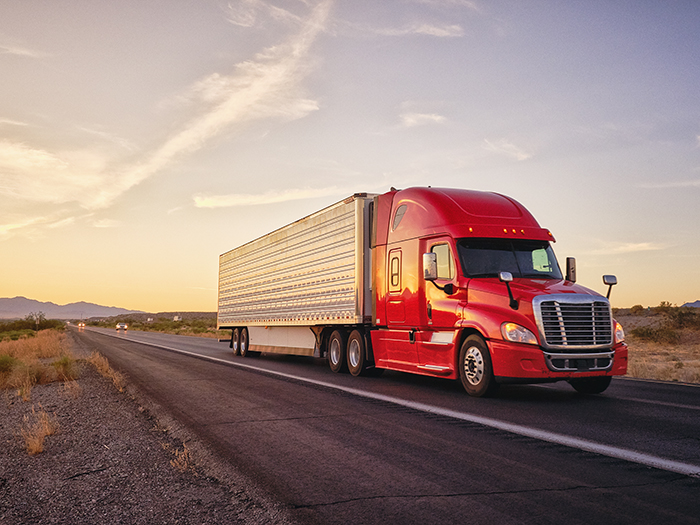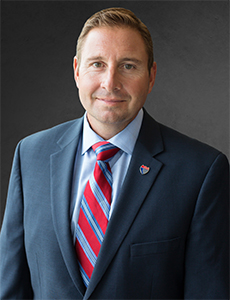Sponsored: Great American Insurance Group
4 Ways Best-in-Class Transportation Operators Are Taking Control of Risk and Lowering Insurance Costs

A confluence of trends is rapidly increasing the risks and challenges faced by transportation operators.
With smartphone and other handheld device usage at an all-time high, distracted driving remains a huge issue. According to the National Safety Council, phone usage while driving leads to 1.6 million accidents annually. Population growth adds more drivers each year, increasing the number of vehicles on the road.
Tony Mercurio, president and CEO of National Interstate Insurance, a member of Great American Insurance Group noted, “Even transportation operators with strong safety practices regarding distracted driving are adversely impacted by other distracted drivers on the road.”
In addition, risk managers and transportation operators overseeing commercial auto fleets are facing a tight labor market as more of their long-term drivers retire. Younger workers are choosing other careers, leaving operators in a bind to fill the talent gap.
“Fleets are searching high and low for qualified drivers,” explained Chris Mikolay, vice president of national accounts and truck alternative risk for National Interstate.
“Many are finding creative ways to attract drivers but considering the current labor environment, it is often difficult to find the right fit.”
Finally, third-party injury cases are more often finding their way into the courtroom. Mikolay said that plaintiffs’ attorneys have been using new strategies to achieve awards that often appear excessive for the damages sustained.
Transportation operators are working hard to mitigate the increased risk of accidents and to curb the higher cost of claims but, according to Mercurio, it will take a holistic approach to find a solution.
“The commercial auto space has been one of the poorest performing sectors of property & casualty insurance in the last few years,” he said. “The best transportation operators, therefore, have recognized the importance of managing their risk and how they buy insurance.”
Here are four areas best-in-class transportation operators are focused on in order to manage and reduce cost of risk.
1) Safety culture must be led by top management to be successful.

Chris Mikolay, Vice President of National Accounts and Truck Alternative Risk, National Interstate
As any transportation operator knows, implementing best practices and instilling a safety culture within the organization can directly impact claims. In order to truly instill safety into the culture of an organization, however, top-down management buy-in is a must.
“When we think about a safety culture, the first thing we look at is management,” said Mikolay. “What is their overall attitude toward training and safety, what disciplines do they have in place and are they willing to make the financial commitment? Many in top management will give lip service about safety, but care more about getting a vehicle from point A to B. Safety and training have to be an executive level concern in order for training measures to stick, and in the long run, a strong safety culture translates to lower cost of risk.”
Once management is onboard and they have empowered their employees, companies can look at safety and training on a more granular level, such as reviewing their hiring practices, quality of their existing drivers, initial and ongoing training programs and effectiveness of safety practices. Safety also goes beyond the human element. Transportation operators need to adhere to equipment maintenance schedules that meet or exceed industry standards for the vehicles within their fleet.
In practice, Mikolay has seen firsthand how a safety culture can succeed.
“A few years back we had a customer that was experiencing elevated claims activity, which caused their cost of insurance to increase significantly.
“We discussed possible solutions, including an option to share risk through a captive program. This gave management incentive to improve their operations and potentially reduce their cost of risk.
One of the investments they made was to hire a much more experienced safety manager to oversee their risk management program. That manager, along with senior management, made safety a top-down priority.
“He turned their culture around,” said Mikolay. “Their total cost of risk is now half of what it was 10 years ago, and they have become a prime example for how to maintain a well-run fleet and effectively manage the cost of risk.”
2) Best-in-class transportation operators are investing in technology to reduce claim severity and change driver behavior

Tony Mercurio, President and CEO of National Interstate Insurance, Great American Insurance Group
While smartphones and other hand-held devices contribute to distracted driving, technology also acts as a key component to improving driver safety and managing risk.
“That is why transportation operators have to be intelligent about how they implement new technologies,” said Mercurio. “If operators use technology wisely, it’s going to help their whole business.”
Two-way cameras, lane departure sensors and forward collision avoidance radar each add a layer of safety and can reduce costs.
The cameras, for example, capture both the road and the driver at the same time. In the instance of an accident, the cameras give transportation operators definitive proof of what actually occurred. According to Mikolay, the video often shows it is not the fault of the driver.
“Two-way cameras have become a game changer in that way,” he said. As a result, more drivers are starting to understand and appreciate the benefit of cameras in their vehicles. In addition to proving fault, cameras can be used to coach drivers and improve driving habits.”
As for lane departure sensors and forward collision radar, evidence suggests the technology is reducing claims frequency. Alarms will alert the driver to any swerving outside their lane to get them back on track. Collison radar will apply the brakes if it senses a truck is too close to the car in front of it, effectively avoiding a rear-end accident.
Technology also opens the door to real-time data collection, which allows meaningful changes to behaviors and ultimately improve driver performance. This enables transportation operators to identify issues, make adjustments and update training protocols as the data comes in.
“That’s just the start. The goal for transportation operations is to reach a level where they can predict potential risks before the even occur, said Mercurio. “It’s an investment worth making, because with that level of data, transportation operators can make smarter decisions.”
3) Transportation operators are identifying alternative risk financing solutions, like participating in captive insurance programs.
In addition to implementing safety and technology into the fold, the best transportation operators are looking for creative ways to finance risk.
“Through alternative risk financing, transportation companies can make a bet on themselves,” observed Mercurio. “By sharing in a portion of the insurance risk, companies can realize the upside of their investment in safety and technology and ultimately lower their insurance costs.”
There are various ways to structure insurance programs such as deductibles and other individualized retentions to allow transportation companies to share risk. A popular approach that companies of all sizes can participate in are group captive programs.
According to Mikolay, “Group captive programs can be structured around some combination of risk appetite, type of business or business affiliations. Just like an insurance company, members in group captive programs share in a portion of the claims costs and earn investment income while claims are in the process of being settled. If claims cost are less than expected, members benefit through lower insurance costs and investment income.”
“Group captives are appealing in ways other than just risk financing,” Mikolay said. Once these transportation operators come together, they create accountability and actually push each other to improve their operations though collaboration regarding best practices.”
4) Working with a specialist insurance carrier can make a big difference.
For transportation operators aiming to improve their operations, better manage their risks and cut down on insurance costs, working with the right carrier can make or break their efforts.
It’s important to work with an insurance carrier that has expertise in managing difficult transportation claims. You want someone who can respond quickly and can provide the right guidance during an accident. Further, a specialist insurance carrier will have risk management resources that can help avoid claims to begin with, including consultants that will proactively work with a transportation operator to identify areas of concern.
Finally, a specialist in transportation insurance will be able to provide the appropriate coverages, limit and customized insurance solutions that transportation operators require.
“At National Interstate we mean it when we say an insurance experience built around you,” stated Mercurio. “We recently celebrated our 30th year of serving the transportation industry with insurance programs tailored to individual needs, claims expertise that is respected in the industry, and responsive safety services that impact the overall operations of our customers.”
National Interstate Insurance Company, a member of the Great American Insurance Group, is rated “A+” (Superior) by A.M. Best Company and serves the transportation industry through several companies including National Interstate Insurance Company and Vanliner Insurance Company. To learn more visit https://www.natl.com or https://vanliner.com.
Policies are underwritten by National Interstate Insurance Company, 3250 Interstate Dr., Richfield, OH and Vanliner Insurance Company, authorized insurers in all 50 states and DC; National Interstate Insurance Company of Hawaii, Inc., an authorized insurer in HI, MI, NJ and OH; and Triumphe Casualty Company, an authorized insurer in all 50 states and DC except in MA, MI, NJ, NY, RI and WY. A.M. Best rating affirmed September 11, 2019. A.M. Best rating affirmed September 11, 2019.
This article was produced by the R&I Brand Studio, a unit of the advertising department of Risk & Insurance, in collaboration with Great American Insurance Group. The editorial staff of Risk & Insurance had no role in its preparation.










